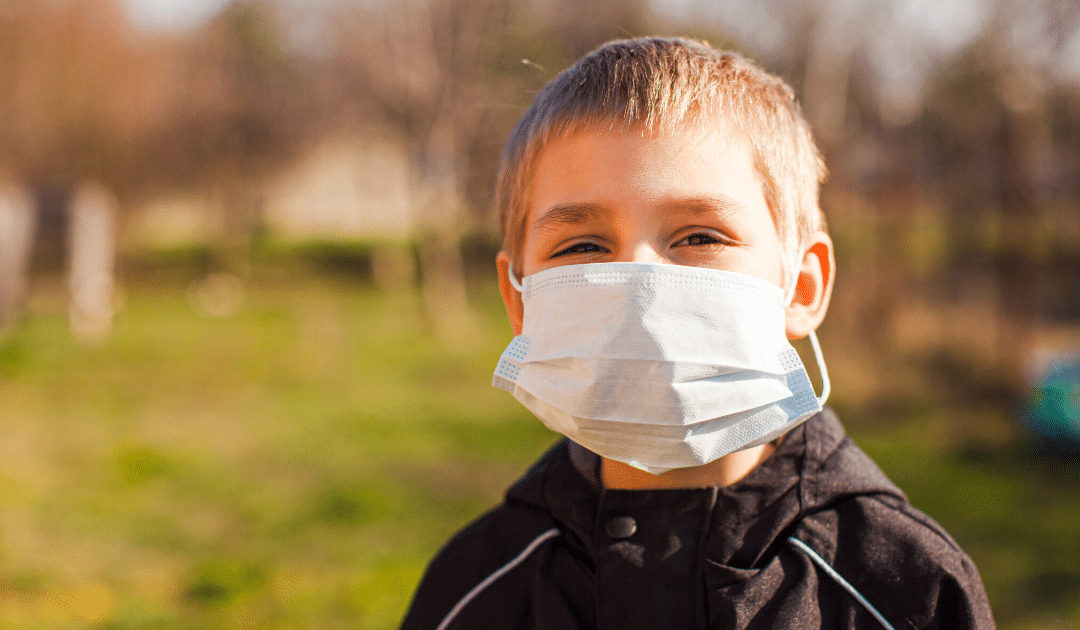No one knows what the upcoming school year will look like, thanks to coronavirus. What we do know, however, is that teachers and educational support professionals will need to be prepared for any scenario — schooling in person, hybrid classrooms, online learning, staggered scheduling, rotating teacher shifts, and more.
While there may not be much that you can control right now, you can do your best to prepare for the fall by reviewing what we already know about COVID-19 and applying that knowledge to your classroom plans.
If your school makes the decision to resume in-person classes, here are some guidelines issued by the CDC for schools (last updated May 19, 2020) and how you can prepare for them in the fall.
Social Distancing
The more time a student or staff member interacts with another, the higher the chance of contracting or passing on the virus. By now, we all know that that the term “social distancing” means staying at least 6 feet apart from one another, however, this may not be possible in your classroom. Before you get back into your classroom, take some time to consider ways that you can optimize your space by separating student desks, and workspaces the farthest that you can away from one another.
Respiratory Etiquette
It’s important for children to learn to sneeze and cough into their elbows, to help fight the spread of germs, including the virus that causes COVID-19. It is also important that hygiene supplies are placed close to each student, so that the potential virus spread is limited. Consider having multiple tissue stations placed around the room or have each child bring their own box that they can keep at their desk.
Face Masks
More and more cities are requiring face masks, and that may be the case for classrooms in the fall, especially for staff and older students. If masks become mandatory at your school you can either require students to bring their own, or make it fun and announce a mask theme for your entire class. You and students could even make your own and create a story around them. Remember this whole situation is just as hard on students as it is on adults; small actions like this have the potential to make their day a little brighter.
Health & Safety Messaging
The CDC recommends placing signs in highly visible areas, like entrances and restrooms, and your school may also require you to place them in your classroom. Pinterest has all kinds of hygiene posters that are free to print out and hang up! They also have hygiene lessons that teachers can easily incorporate into their lesson plans, to help remind younger students about the safety and importance of not spreading the virus.
Hand Hygiene
Students should wash their hands often for at least 20 seconds — especially if they have interacted with one another. When you sit down to lesson plan, keep in mind allowing time for more frequent and longer breaks to the restroom for handwashing. You should also have sanitizer (at least 60% ethanol or 70% isopropanol) in multiple places in the room, readily available for all students, and/or ask students to bring their own.
Adequate Supplies
Along with having the correct sanitary supplies, you should also be prepared for the possibility that students will not be able to share school supplies with other students. Any crayons, markers, pencils, scissors, folders, books, etc. that are shared might have to be available to each student at their own desks. Take this into consideration when you are preparing supply lists for parents and when you are buying supplies for your classroom.
Cleaning & Disinfecting
If you are starting in-person classes in the fall, your school has also probably already started a cleaning and disinfecting regimen that will continue throughout the year. This may or may not require you to clean your own classroom; however, you should be prepared to do so. You will need to disinfect high-touch areas throughout the day like doorknobs, desks, hall-passes, and chairs. Try and disinfect as often as you can — between classes and at the end of the day — or create a schedule where the last ten minutes of class each student disinfects their own area.
Screening & Testing
As testing methods and standards continue to evolve, your school may adopt a screening and testing policy. Policies may include a protocol for temperature checks, guidelines for symptom screenings, and plans for rapid response to staff or students who exhibit signs of illness. Whatever protocol your school decides on, clear communications will be key to its success. Be prepared to stay informed on the plan, take steps outlined for educators, and communicate with parents as needed.
We may not know what this school year will look like, but we do know that our amazing teachers will do whatever they can to make it as enjoyable and “normal” as they can for our students.
Remember, if you can get through last spring, you can get through anything. Bring on back-to-school!
This article is furnished by California Casualty, providing auto and home insurance to educators, law enforcement officers, firefighters, and nurses. Get a quote at 1.866.704.8614 or www.calcas.com.
- Graduation – When to Remove Your Child from Your Auto Policy - May 18, 2023
- How to Prevent Catalytic Converter Theft - May 17, 2023
- How Much Does Home Insurance Cost? - May 17, 2023

